Plant enthusiasts love succulents for their low-maintenance and aesthetically pleasing nature. These versatile beauties come in all shapes, sizes, and colors, so there’s an option for everyone. However, succulents are also known for their love of the sun and heat, which leads to the question: Can succulents survive winter?
In this article, we’ll discuss whether succulents can survive winter and helpful tips for survival and growth.
Let’s dig in!
Can Succulents Survive Winter: The Verdict

Sempervivum succulent plants are often cold-hardy, though it’s important to check the cultivar.
©Christina Siow/Shutterstock.com
Succulents can survive winter with proper care and placement. If you live in USDA zone 7 or above, you should be able to keep your succulents outside for the winter months. Alternatively, you may need to overwinter them indoors if you live in USDA zone 6 or below.
Some exceptions exist to this rule: some species of cold-hardy succulents will survive in frosty outdoor conditions, though the reduced sunlight hours and extreme temperature fluctuations could limit their growth over time.
With that in mind, here are ten tips to help your succulents survive the winter.
1. Choose Cold-Hardy Succulent Species

Know your USDA Zone and pick cold-hardy succulents, such as hens and chicks, which can withstand temperatures below freezing.
©iStock.com/GettyTim82
Choosing succulents that suit your USDA Zone is the first step for ensuring their survival during the winter. While most of these desert dwellers will die in frosty conditions, a few exceptions exist.
Several species of sedum succulents and sempervivum succulents will survive outdoors in extreme winter conditions and can be planted in climates as low as USDA Zone 4.
Other succulent species should be overwintered indoors.
2. Insulate and Shelter Your Succulents
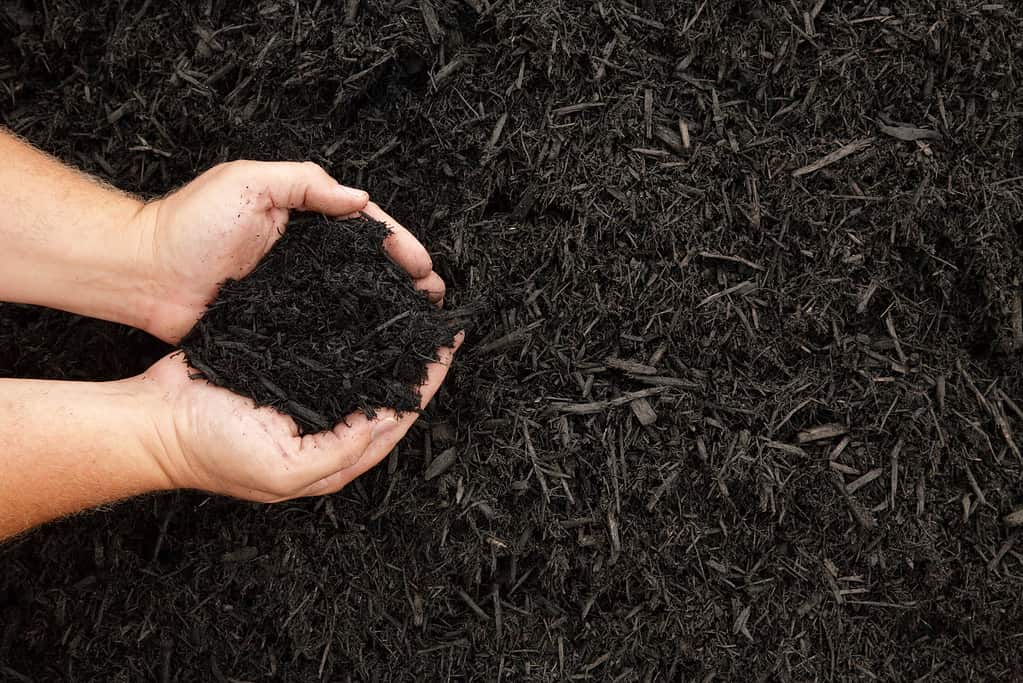
Mulch will add an extra layer of protection for cold-hardy succulents during winter.
©iStock.com/witmerphotography
If you expect extreme weather or worry about how the winter will affect your outdoor succulents, consider adding a layer of insulation to help protect them during dormancy.
Place mulch or straw around the roots of your succulents to provide extra insulation, and consider covering them with landscaping fabric to protect them from the snow. A water-resistant covering can also help prevent overwatering in areas with high precipitation levels and a continuous freeze-thaw cycle.
3. Reduce Watering Frequency
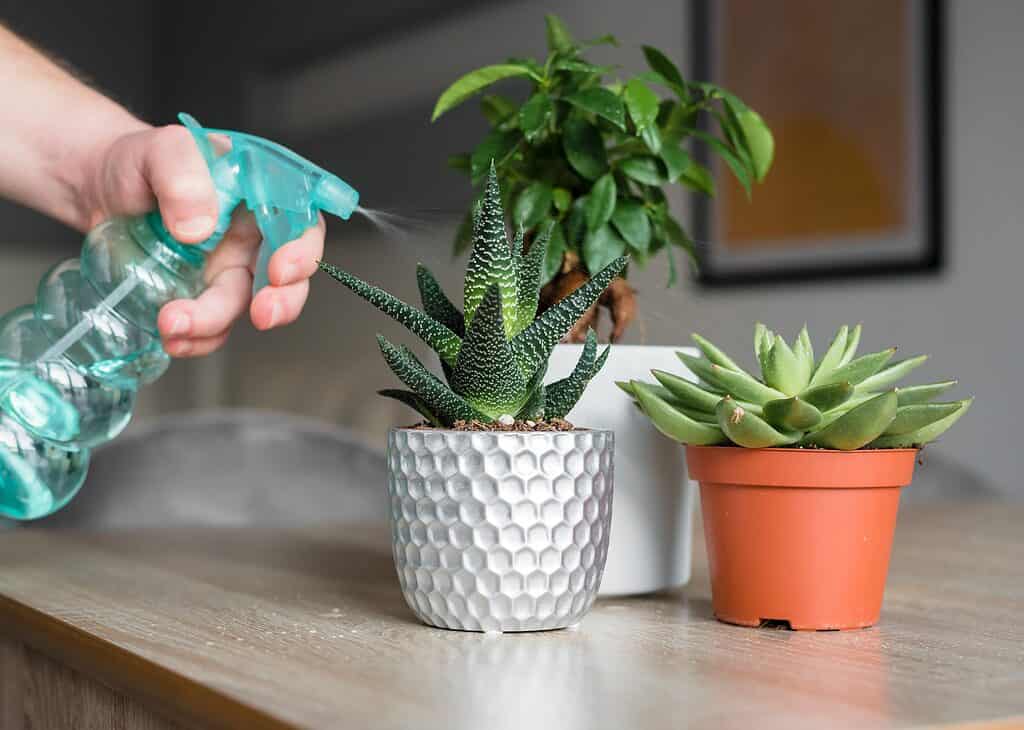
You should reduce your succulent watering in the winter during their dormant period.
©Ilina Yuliia/Shutterstock.com
Most succulents enter dormancy during the winter months (though sedums are an exception to this rule). During dormancy, the succulent will enter a rest period and require fewer resources and less energy—similar to hibernation.
During dormancy, reducing watering frequency is important as the succulent will absorb less water, making it more susceptible to root rot. This consideration applies to both indoor and outdoor winter-dormant succulents.
4. Maximize Light Exposure

Succulents need sunlight to thrive.
©iStock.com/svf74
Succulents generally need six or more hours of sunlight per day, which can be hard to accomplish during winter.
Consider supplementing your succulents with a grow light to fill the gap during the winter months. If you have cold-hardy succulents outdoors, ensure they’re placed in an area with plenty of unshaded exposure. Uncover your succulents regularly or use outdoor-safe LED grow lights under the cover when using a protective layer.
5. Prune and Maintain Your Succulents

Keep up with your succulents pruning to keep them healthy during the winter.
©panattar/Shutterstock.com
Stay on top of pruning and removing dead or dying tissue from your succulents. As dying leaves decompose, they may introduce bacteria or attract pests. Swift removal will help keep your succulents safe.
6. Avoid Repotting and Propagation

Wait until spring to propagate your succulents.
©NatVV/Shutterstock.com
Succulents are easy to propagate and share. However, this process is best left until spring. As the succulents are dormant and facing challenging conditions, the added stress of repotting and propagation could kill your plant. Again, summer dormant sedums and similar succulents are the exception.
If you’re moving outdoor succulents into a pot for the winter, tackle this task in the late summer or early fall. You can leave the pots outdoors until the risk of frost is imminent.
7. Avoid Fertilizing During Winter
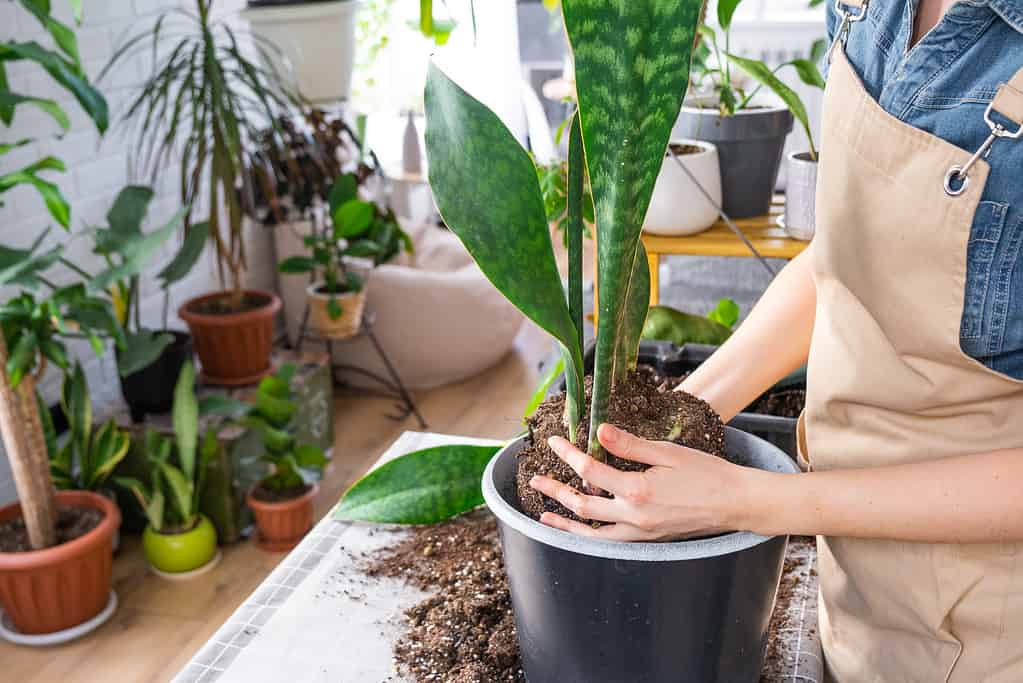
Skip the fertilization of your succulents during the winter.
©Ольга Симонова/iStock via Getty Images
It’s also important to avoid fertilization during the winter months, as dormant succulents may not adequately absorb the nutrients. The leftover nutrients could stress your succulent and kill it.
Fertilize throughout the active growing period instead.
8. Place Indoor Succulents Together
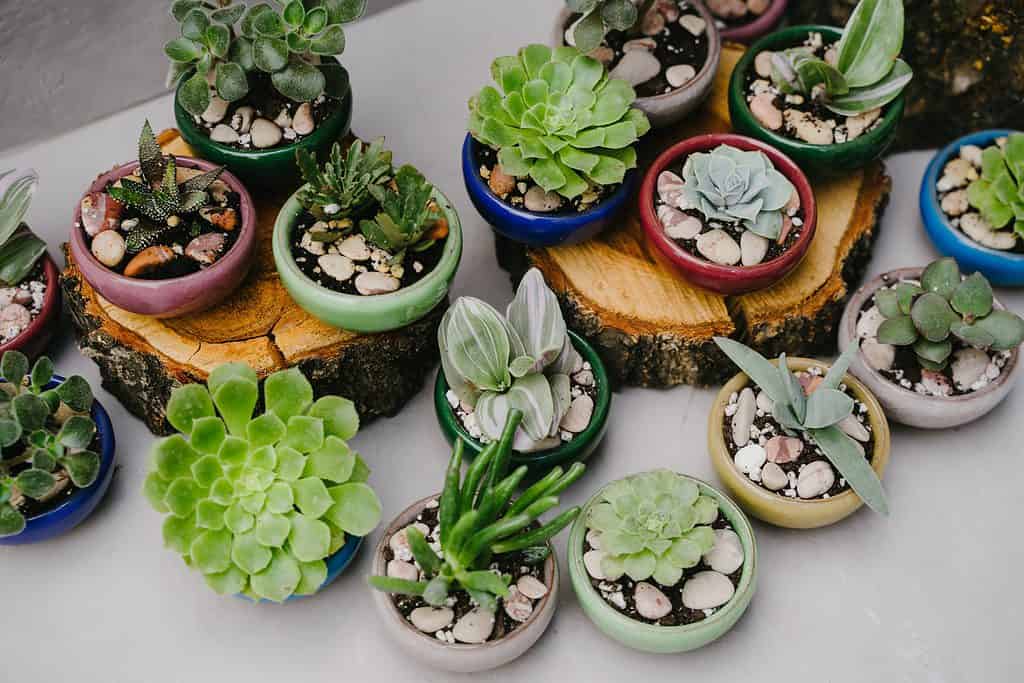
Place your succulents together for warmth.
©Alice Rodnova/Shutterstock.com
Placing indoor succulents together during the winter can help promote their survival, as the plants will share warmth. This works for other indoor plants, too!
A word of caution for this approach: place smaller pots and shorter plants closer to the light source, as larger planters and succulents could cast them in shadow and hinder their growth.
9. Monitor the Indoor Conditions
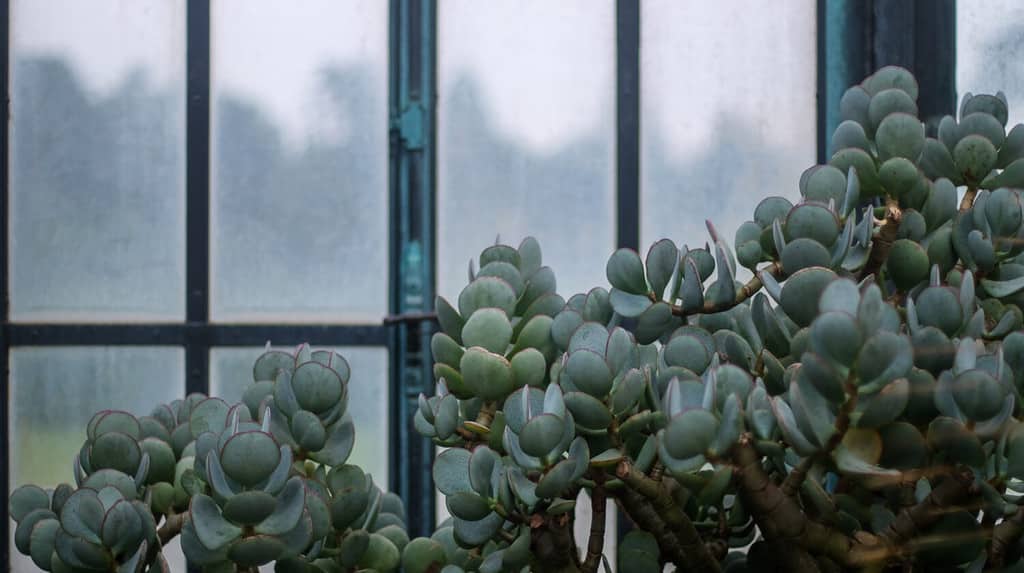
Ensure your succulents thrive inside during the winter and keep them away from a drafty window or heater.
©Bridget Moyer/Shutterstock.com
Pay attention to the conditions if you move your succulents indoors for the winter. Monitor the humidity levels and ensure your succulents aren’t placed near a vent, heater, or drafty window.
Be mindful of pests and move infected succulents away from the rest of your plants until the issue is resolved.
10. Prepare Them for Spring
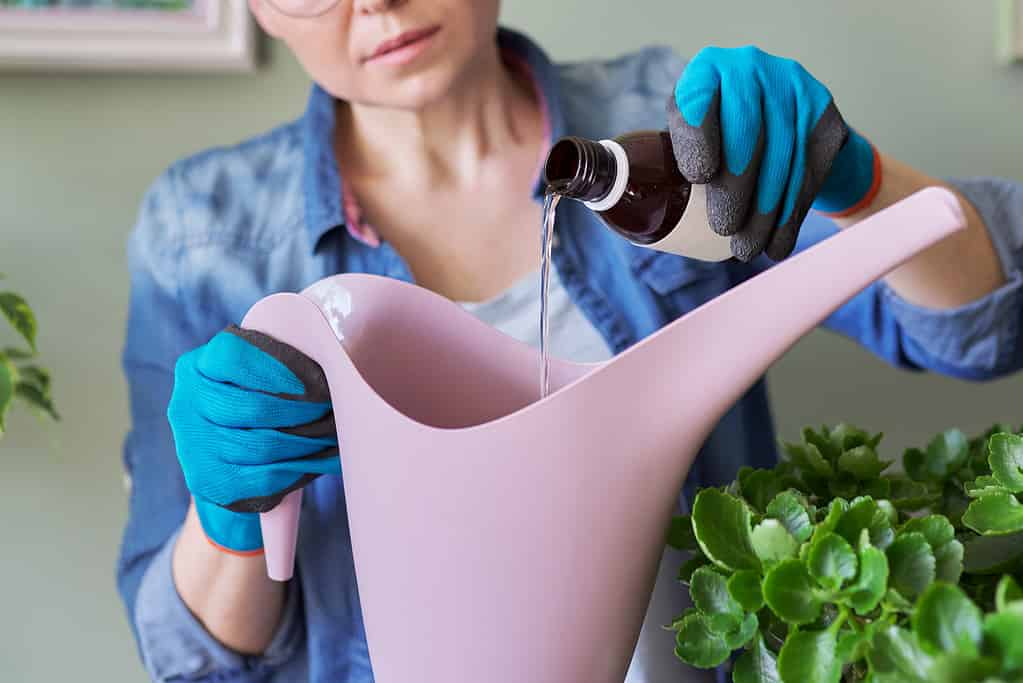
Wait to fertilize your succulents until spring.
©Valeriy_G/iStock via Getty Images
When spring is on the horizon, take some time to prepare your succulents for new growth.
Start increasing the watering frequency and feed with organic matter or a succulent-friendly plant food mixture.
Propagate and repot succulents to reduce crowding and provide ample room for more growth.
Slowly transition overwintered succulents back outdoors and remove mulch and covers from outdoor plants when the risk of frost has passed.
The photo featured at the top of this post is © Wirestock Creators/Shutterstock.com
Thank you for reading! Have some feedback for us? Contact the AZ Animals editorial team.







